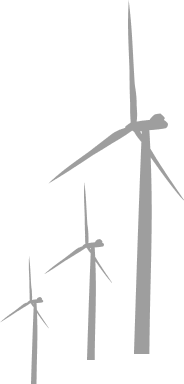Eemshaven
The Eemshaven is a transhipment port, located in the municipality of Het Hogeland in the province of Groningen and is the largest seaport in the Northern Netherlands. It is located on the western bank of the Eems estuary, an inlet where the Ems flows into the North Sea.
The port is rapidly developing into a logistics hub in Western European shipping routes. But what really makes Eemshaven a unique port is that the port has specialized as an energy port. As an ‘energy hub’, it has developed strongly in the field of renewable and sustainable energy.
For example, there are three large power plants and several larger power cables coming ashore, including from Norway. These cables will come ashore in Eemshaven for the Dutch energy supply and to supply the Google data center located there with energy.
Cable Center Eemshaven
The knowledge and experience regarding the construction and maintenance of cables in the Northern Netherlands region has been bundled in a collaboration called Cable Center Eemshaven (www.cablecentre-eemshaven.com). CCE supports companies in finding the best solution for cable projects. Specialist training and education in the field of Installation, maintenance and repair of power cables is provided. Service companies within the power cable industry can also turn to CCE for their storage, testing and maintenance needs.

Wind energy
The Eemshaven port plays an active role in wind energy. Besides the fact that the largest Dutch wind farm on land is located here, the port also plays a prominent role in the development of offshore wind farms during the construction and subsequent maintenance of the wind turbines.
Eemshaven is geographically conveniently located for offshore wind activities in the North Sea. Moreover, the Eemshaven meets all maritime requirements. To serve the fast-moving offshore wind sector, Eemshaven has become a hub for offshore wind farms, especially in the German adjacent part of the North Sea.
In recent years, Eemshaven has become the setting for large-scale activities in the field of mounting and shipping wind turbines. Monopiles, transition pieces, converter stations, wind turbine blades and many more materials were transported from the Eemshaven to the various offshore wind farms.
Decommissioning
It is important for the decommissioning activities that the port is well positioned in relation to the offshore wind farms in the North Sea. Eemshaven is conveniently located in relation to the wind farms in the northern, northeastern and western North Sea. These are both Dutch and German wind farms.
Eemshaven also has a suitable infrastructure. For example, the local roads are prepared for the transport of long and heavy components and the immediate region offers sufficient opportunities for temporary storage and further processing of the wind turbine components. After just over half an hour’s drive you reach the A7 that connects the northern provinces to Germany. A good connection for any transport of residual products from the processing process.
In many cases this will not be necessary because the region offers sufficient opportunities for processing the wind turbine components. For example, Chemport Europe in Delfzijl offers various options for the chemical processing and reuse of thermoplastics and composites.
In addition to positioning and infrastructure, it is also a requirement that the port where decommissioning activities take place meets maritime requirements and has suitable facilities for the dismantling of wind turbines. The Eemshaven complies with this.
The dismantling activities will take place within the Eemshaven in the Beatrix and Julianahaven. These ports have long and wide quays with a draft of up to 11 metres. A 220-metre-long heavy-duty quay (30 tons per m2) can also be offered. Long vessels with a considerable draft can be positioned directly in front of the quay on both quays.
The terminals within these ports are paved and suitable for temporary storage and handling of heavy objects. Heavy harbor cranes, reach stackers, SPMT’s and forklifts are available to lift the blades, nacelles, tower sections and foundations and move them within the terminal.
Specific areas have been designated for the dismantling work where the processing takes place in a safe manner. After the first processing, the materials are taken directly to the recycling companies in the nearby region.
For more information about the Beatrix and Julianahaven, visit the Groningen Seaports website: www.groningen-seaports.com

